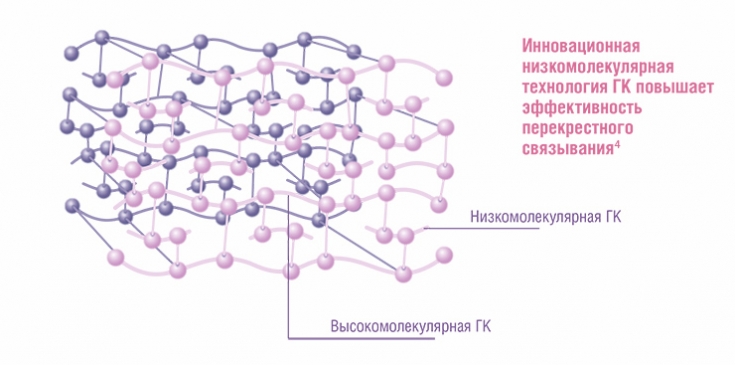Injectable skin lifting – it is one of the most popular procedures in the field of aesthetic medicine. And the question of choosing a dermal filler for its implementation is faced by every injection doctor.
While most fillers are similar, their physical characteristics can vary significantly.
On estet-portal.com, read what filler properties you need to pay attention to when choosing a drug, as well as what physical characteristics are optimal for a quality dermal filler.
Hyaluronic acid fillers: a success story

For the first time, the world learned about hyaluronic acid in 1942, when it was proposed to use this substance in the food industry as a substitute for egg white.
Since then, the mysterious molecule has been of interest to many scientists, and especially specialists in the field of aesthetic medicine.
The properties of hyaluronic acid make it an ideal candidate for use as a dermal filler, however, in its pure form, it breaks down very quickly in tissues.
This set off a lot of research to find ways to make the product sustainable, which has been successful.
The article was written on the recommendations of Marta Diogenova, an ophthalmologist of the first qualification category, an active member of the Society of Ophthalmologists of Ukraine, an esthetician, the head of the Aesthetic Love cosmetology center (Lviv).
Main properties affecting the quality of hyaluronic acid fillers
In order to choose a dermal filler, it is necessary to clearly understand what properties affect its quality.
Among the main ones, it is worth highlighting:
• characteristics of cross-linking of hyaluronic acid chains;
• filler density;
• viscosity of dermal filler;
• concentration of hyaluronic acid.
The degree of cross-linking affects the duration of the effect of the application of fillers. Therefore, dermal fillers such as Juvederm® Vycross™ from Allergan, which have a large number of cross-linked hyaluronic acid, provide the most lasting lifting effect.
Read also: The unique features of the Juvederm® line: the possibilities of Vycross™
Physics of skin lifting: how fillers work
One of the most important physical parameters characterizing fillers based on hyaluronic acid – is the hardness of the gel (G`). The higher this indicator, and the less the filler contains free molecules of hyaluronic acid – the harder it is to inject it through the needle.

Also, the consistency of the filler is affected by the size of the gel particles. Manufacturers use two technologies to grind the gel mass. The first involves "sifting" it through the filters, as a result of which the filler contains particles of a strictly specified size.
The essence of the second technology is the homogenization of the gel mass, as a result of which the final product acquires a uniform consistency. Products made with this technology are softer gels with lower G` values that spread easily under the skin.
Read the latest articles in Telegram!
Mechanics of skin lifting: the secrets of effective rejuvenation
To obtain the ideal result of injectable skin lifting, overcorrection should be avoided in the first place. In this regard, it must be remembered that hyaluronic acid-based dermal fillers continue to increase in volume during the day after injection.
Another secret of effective lifting – this is an intensive massage after the injection, which ensures a better distribution of the drug in the tissues.
Superficial injections should also be limited to minimize the risk of the Tyndall effect.
Following all safety rules, and working with quality fillers such as Juvederm® Vycross™ from Allergan, it is easy for a specialist to be sure of the result of the correction.
Original drugs of the company "Allergan" You can only purchase from an authorized distributor.
Focus on: Recommendations for working with drugs from the Vycross™ collection







Add a comment